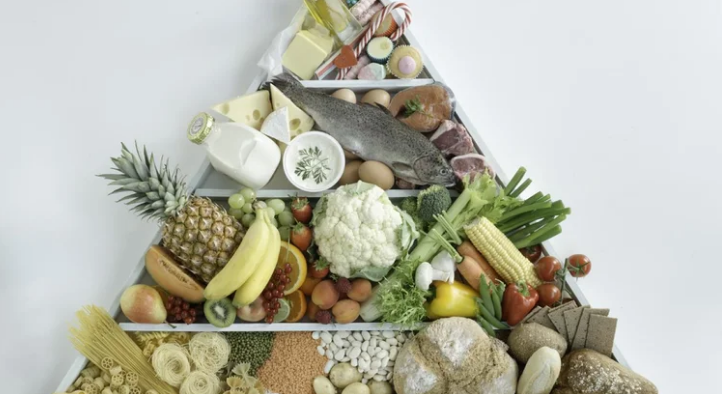Micronutrients & Macronutrient

Micronutrients are plant nutrients which are required in small quantities and are mainly responsible for repairing damaged tissues and cells, prevention of infectious diseases by fighting against the disease-causing pathogens including bacteria virus and fungi.
Examples of micronutrients include: iron, calcium, vitamins, minerals and vitamin C. Micronutrients are largely obtained from vegetables, fruits, cashews, eggs, dairy products etc. Deficiency of micronutrients results in Anemia, scurvy, goitre and etc.
Other Functions of Micronutrients
- Hemoglobin synthesis
- Act as coenzymes or cofactors for various enzymes.
- Prevention of non-communicable diseases
- Maintenance of vision e.g Vitamin A.
- Synthesis of thyroid hormone e.g Iodine
Macronutrients are nutrients that our body requires in large amounts in order to ensure optimum function of the whole body. These macronutrients provide energy, supports the different metabolic system, growth and development.
Examples of macronutrients include: carbohydrates for energy storage, fat for storing vitamins as well as maintain appropriate body temperature and proteins that are responsible for maintaining enzymes and acid balance. Macronutrients are mainly obtained from potatoes, fish, nuts, beans, pulses, legumes, tofu, soy, nuts, fish, cheese, oilseeds, milk, etc. Deficiency of macronutrients results in malnutrition such as kwashiorkor, marasmus etc.
Other Functions of Macronutrients
- Maintenance of body temperature
- Muscle development
- Promoting healthy cell function
- Hormone, enzymes and other chemical compound synthesis
- Maintenance of gut health and cellular signaling mechanism
Also Read: Difference Between Dinner And Supper
Facts About Micronutrients
- Micronutrients are required in small quantities.
- Micronutrients are present in minute quantities or concentration inside the plant body.
- Micronutrients do not play any role in building body structures.
- Micronutrients do not play any role in maintaining the osmotic potential of the plant cells.
- Entirely all micronutrients are minerals.
- Entirely all micronutrients are absorbed through roots.
- Micronutrients are toxic if present in cells in relatively higher concentrations than the required quantity (normal level).
- There is no further classification of micronutrients.
- The concentration of micronutrients in plant cells is less than 1mg/g/dry weight.
- Micronutrients can also be referred to trace elements.
- Micronutrients are largely obtained from vegetables, fruits, cashews, eggs, dairy products etc.
- Deficiency of micronutrients results in Anemia, scurvy, goitre and etc.
Facts About Macronutrients
- Macronutrients are required in large quantities.
- Macronutrients are abundantly present in the plant body.
- Macronutrients play a big role in building body structures.
- Some good number of micronutrients plays a big role in maintaining the osmotic potential of the plant cells.
- Almost a good number of macronutrients are minerals whereas some are non-minerals (C, H and O).
- A good number of micronutrients are absorbed through roots whereas some such as C, H and O are not.
- Macronutrients are usually non-toxic to the cells even if they are present in relatively higher concentration than the required level (Normal level).
- Macronutrients can further be classified into primary nutrients and secondary nutrients.
- The concentration of macronutrients in plant cells is more than 1mg/g/dry weight.
- Macronutrients can also be referred to as major elements.
- Macronutrients are largely obtained from beans, pulses, legumes, tofu, soy, nuts, fish, cheese, oilseeds, milk, etc.
- Deficiency of macronutrients in malnutrition kwashiorkor, marasmus etc.
Also Read: Difference Between Ribeye And Delmonico
Micronutrients Vs. Macronutrients In Tabular Form
| BASIS OF COMPARISON | MICRONUTRIENTS | MACRONUTRIENTS |
| Requirement | Micronutrients are required in small quantities. | Macronutrients are required in large quantities. |
| Examples | Mn, Cu, Zn, Mo, B, Cl and Ni. | C, H, O, N, P, K, Ca, S and Mg. |
| Presence | Micronutrients are present in minute quantities or concentration inside the plant body. | Macronutrients are abundantly present in the plant body. |
| Body Structure Building | Micronutrients do not play any role in building body structures. | Macronutrients play a big role in building body structures. |
| Osmotic Potential Maintenance | Micronutrients do not play any role in maintaining the osmotic potential of the plant cells. | Some good number of micronutrients plays a big role in maintaining the osmotic potential of the plant cells. |
| Nature (Minerals or Non-minerals) | Entirely all micronutrients are minerals. | Almost a good number of macronutrients are minerals whereas some are non-minerals (C, H and O). |
| Absorption | Entirely all micronutrients are absorbed through roots. | A good number of micronutrients are absorbed through roots whereas some such as C, H and O are not. |
| Toxicity | Micronutrients are toxic if present in cells in relatively higher concentrations than the required quantity (normal level). | Macronutrients are usually non-toxic to the cells even if they are present in relatively higher concentration than the required level (Normal level). |
| Classification | There is no further classification of micronutrients. | Macronutrients can further be classified into primary nutrients and secondary nutrients. |
| Concentration | The concentration of micronutrients in plant cells is less than 1mg/g/dry weight. | The concentration of macronutrients in plant cells is more than 1mg/g/dry weight. |
| Alternative Name | Micronutrients can also be referred to trace elements. | Macronutrients can also be referred to as major elements. |
| Source | Micronutrients are largely obtained from vegetables, fruits, cashews, eggs, dairy products etc. | Macronutrients are largely obtained from beans, pulses, legumes, tofu, soy, nuts, fish, cheese, oilseeds, milk, etc. |
| Deficiency | Deficiency of micronutrients results in Anemia, scurvy, goitre and etc. | Deficiency of macronutrients in malnutrition kwashiorkor, marasmus etc. |
Also Read: Difference Between Yogurt And Curd